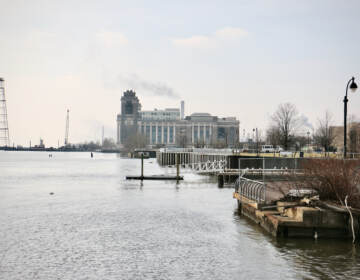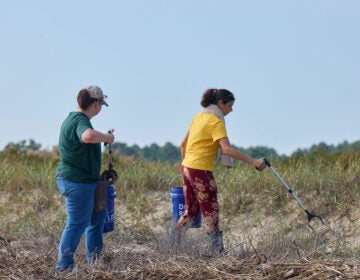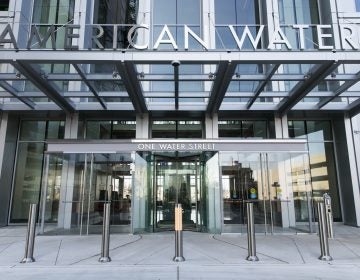43,000 acres of forest cleared for development in Sussex County. Without legal protections, woodlands are vanishing
Unlike nearby jurisdictions, Delaware’s most rural and southernmost county has no requirement to preserve trees.
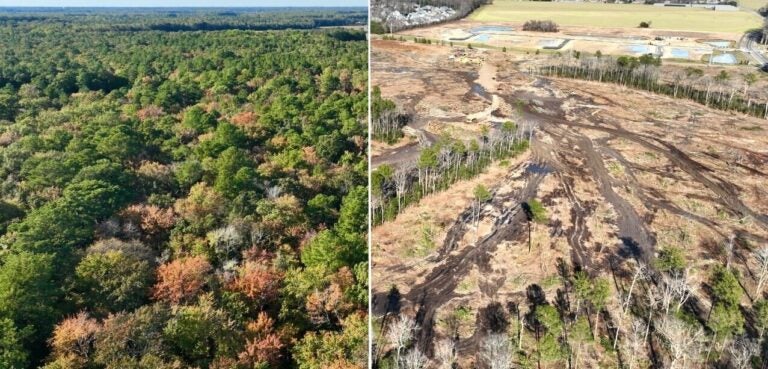
This before and after photo shows the clear-cutting of a once-forested area near Rehoboth Beach. (Courtesy of Sussex Preservation Coalition)
From Philly and the Pa. suburbs to South Jersey and Delaware, what would you like WHYY News to cover? Let us know!
Over the last quarter-century, the population of Sussex County, the most rural and southernmost in Delaware, has nearly doubled — up to 250,000 from 130,000.
The county’s historic, explosive era of growth has largely been fueled by retirees from nearby states who are attracted to the area’s natural charm, laid-back lifestyle, and low property tax rates.
But the boom has come with a price.
Hundreds of farms have been sold and cleared to make way for the construction of more than 55,000 homes and the businesses to serve new residents.
The roads also have become far more congested, especially during the summer, when upwards of 100,000 visitors descend each weekend to the beach towns of Rehoboth, Lewes, Dewey, Bethany, and Fenwick Island. Delaware 1 and several secondary roads have had to be widened to accommodate the flood of traffic and stave off gridlock.
Yet one overlooked cost in a county with several large tracts of protected woodlands and nature preserves — among them Prime Hook National Wildlife Refuge, Great Cypress Swamp and Redden State Forest — is the massive loss of forestland.
From 1998 to 2021, the last year for which figures are available, 43,000 acres of forestland have disappeared in Sussex County, according to the Delaware Forest Service.
To put that number in perspective, imagine a swath of trees nearly four times the size of Wilmington, the state’s largest city. That’s what has vanished — replaced by housing tracts, strip shopping centers, streets, and other structures.

Environmental protection advocates in Sussex County have been increasingly distressed by the clear-cutting of woodlands, which purify air, filter water, prevent erosion, provide habitat for wildlife, and buffer the planet against climate change.
They blame what they call a permissive land use code in Sussex County, which unlike Delaware’s other two counties and the neighboring state of Maryland, does not mandate preservation of a certain percentage of woodlands when approving housing development.
Jane Gruenebaum, who heads the Sussex Preservation Coalition, says that without protection standards, tens of thousands of the roughly 190,000 remaining forested acres are also vulnerable to being leveled.
“Sussex County has no protections for its forest trees or woodlands,” Gruenebaum said. “All the surrounding jurisdictions have protections for forest lands.”
In neighboring Kent County, for example, developments in the designated “growth zone” built on more than 50 acres must include preservation of at least 50% of woodlands.
Gruenebaum and her group had tried unsuccessfully last year to prevent the cutting down of more than 100 acres of trees for a subdivision near her home on the outskirts of Rehoboth Beach.
“There literally was no code or ordinance that we could rely on to try and stop the destruction,’’ she said. “Instead of saving the very things that protect us — trees and native plants and wetlands — we’re destroying them. So we’re making a difficult situation much, much worse. And it’s really worrisome.”
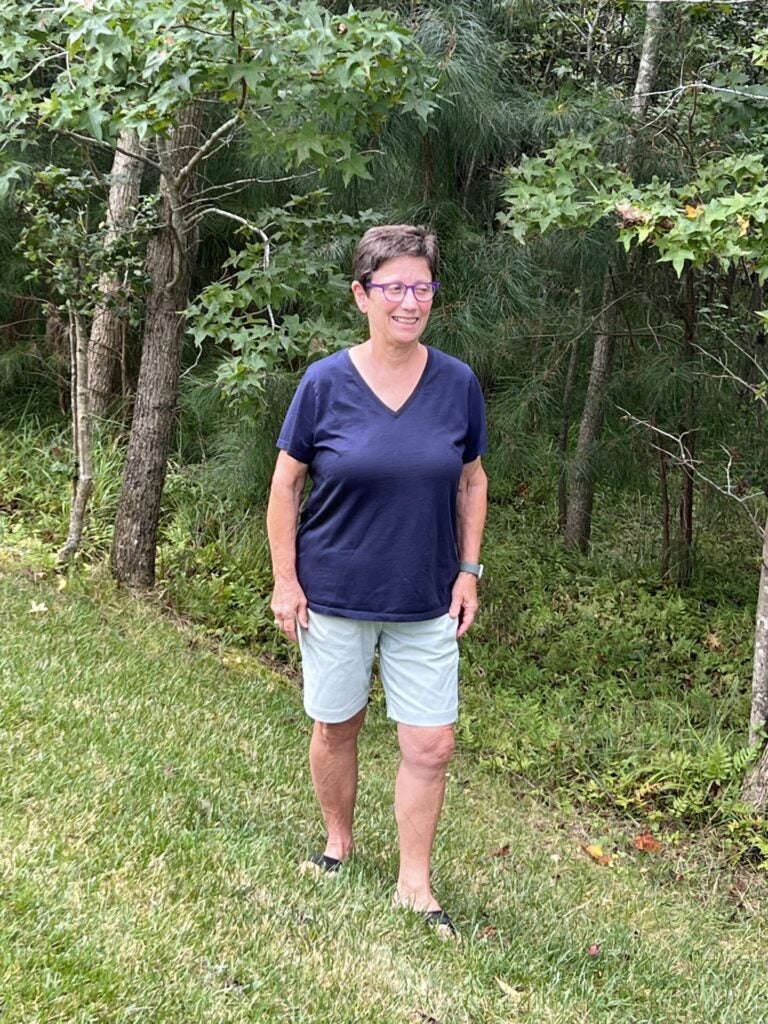
The land use code in Sussex does say “consideration’’ must be given to “minimization’ of tree loss in deciding whether to approve development applications, and requires a 20-foot perimeter buffer of trees between new subdivisions and adjoining properties.
But Gruenebaum says the buffer is more for cosmetic purposes so residents don’t have to look at the new neighborhood next to theirs, and that giving “consideration’’ to tree loss means little when it comes to getting a development plan approved by county planning officials and County Council.
Mike Valenti of the Delaware Nature Society, who previously spent 12 years as the state’s forestry administrator, said protection of woodlands should be a priority for Sussex, where he runs the society’s Abbott’s Mill Nature Center.
Preservation laws in New Castle and Kent counties have led to slight increases in forested areas over the last 25 years, Valenti said, while “Sussex County was the big loser in forest land.”

‘Property rights in Sussex County are paramount’
Gruenebaum’s group and others have been urging the county to make forest protection a priority, and want like-minded preservationists to attend a public workshop on Sept. 21.
The meeting to explore and discuss various areas for changing the county’s land use and housing codes will be at 12:30 p.m. in the county’s Emergency Operations Center in Georgetown.
Todd Lawson, the county’s chief administrator, said ideas about how to better protect woodlands will be one of several topics likely to be aired that afternoon.
Many constituents have urged council members “to look into what we’re calling the development design within Sussex County,” Lawson said. “And that means, really very broadly speaking, how development is allowed to take place and the features of those developments, whether it’s open space, forest preservation, buffers, stormwater, even amenities.”
That led to scheduling the workshop with the five Council members and the five-member Planning and Zoning Commission. The purpose, Lawson said, is to “have that discussion and really take a more expansive look at the code as it is today and any suggested changes that we may want to make in the future. We’re not putting their heads in the sand and saying we don’t care.”
Lawson said he’s familiar with the Forest Service statistics and the desire by preservationists for stricter standards.
He emphasized, however, that “property rights in Sussex County are paramount. The County Council and the Commission understand that there are property rights and people have the ability to do certain things with their property. And that’s a principle that guides decision-making here in Sussex.”
Gruenebaum says that sentiment from elected and appointed government officials during the development boom is exactly why forests have been depleted in her adopted county, where she moved several years ago from Washington, D.C.
She is also cognizant that changing the code to better protect trees could take several months or perhaps years, should County Council decide to move in that direction.
Gruenebaum says surveys her group has conducted with residents show support for woodland protection, so she’s guardedly optimistic that eventually changes will be made.
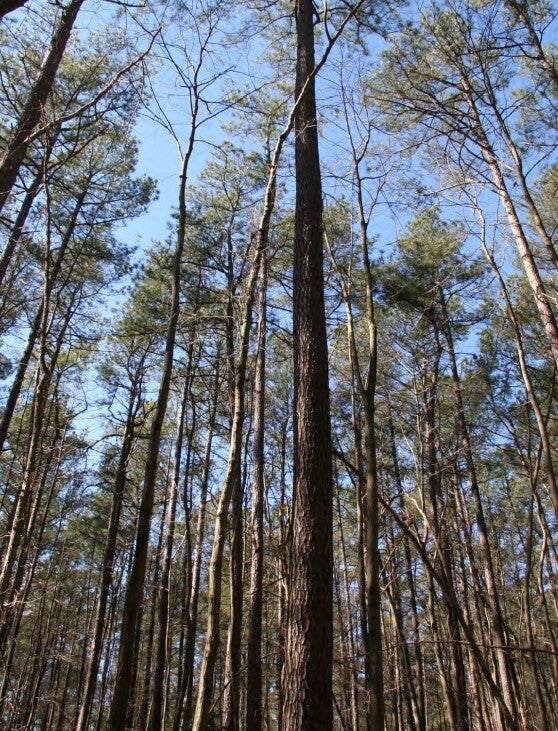
“But I’m far less optimistic that there will be the kinds of changes that we need at this point,”’ she said. “We will be working very hard to influence County Council to try and get them to go further than they would without citizen pressure.”
Valenti, the former state forestry administrator, noted that Delaware’s lack of a strong forest products industry has led many private owners of forest lands in Sussex to sell to developers.
He said the depletion will continue without any change to the county law because agricultural land is very costly now, and it’s almost possible to build around wetlands.
“So forests have become the path of least resistance, unfortunately, and a lot of them get plowed under,” Valenti said. “So if we really want to take a serious step at protecting our forest, there have to be some kind of regulations or laws passed.”
WHYY is your source for fact-based, in-depth journalism and information. As a nonprofit organization, we rely on financial support from readers like you. Please give today.




